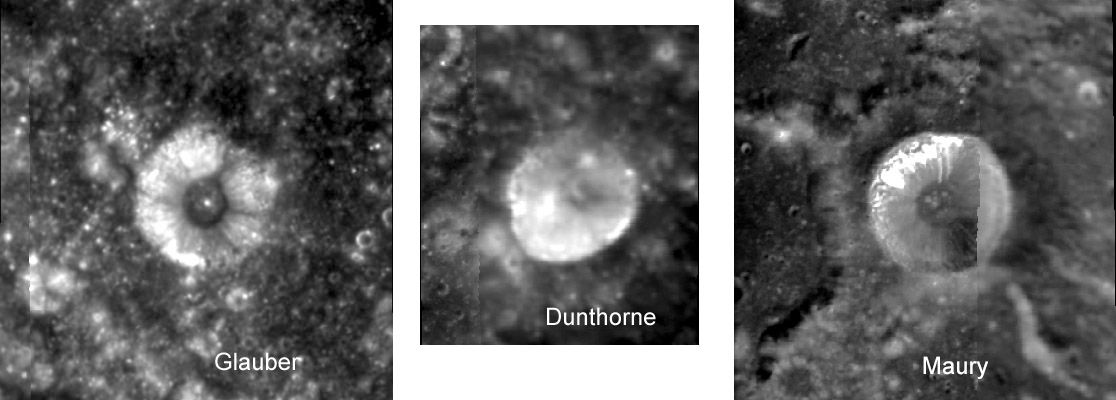
images from Clementine at USGS Map-A-Planet
My first scientific paper was on central peaks of lunar craters, and I haven’t lost my fascination with them yet. Studies of terrestrial impact craters demonstrate that central peaks are rebounds of deep target rocks. Rocks from a depth beneath the surface of roughly 1/10th a crater’s diameter are exposed in peaks. Thus, the central mountains on the floor of 93 km wide Copernicus are thought to come from about 6-10 km below the surface. When I originally studied peaks I used photographs from Kuiper’s 1960 Photographic Lunar Atlas. I discovered that peaks are rare in craters smaller than 10-15 km in diameter and become progressively more common in larger craters. I repeated this [http://articles.adsabs.harvard.edu//full/1978LPSC....9.3669W/000
3669.000.html study] in 1978 using Lunar Orbiter images and found that nearly all fresh craters larger than 35 km have central peaks but fewer than 4% of craters smaller than 5 km have peaks. The newer Clementine data with the high Sun imaging of much of the Moon suggests that central peaks may be more common in small craters than I thought in 1968 and in 1978. The 15 km wide farside crater Glauber has a perfect bright dot of a peak on its flat floor. So does the like-sized Dunthorne, and the floor of 17 km wide Maury is crowded with five rounded hills. At a crater diameter of 15 km, peaks are not completely rare but are less uncommon than I thought. The USGS Map-A-Planet site has been down the last couple of days so I can’t check Clementine, but it will be worthwhile to look for peaks in smaller craters.
Related Links:
My original article on central peaks was in the Communications of the Lunar and Planetary Lab and is not on line.
You support LPOD when buying lunar books (or ANY book) from Amazon!
COMMENTS?
Click on this icon File:PostIcon.jpg at the upper right to post a comment.



